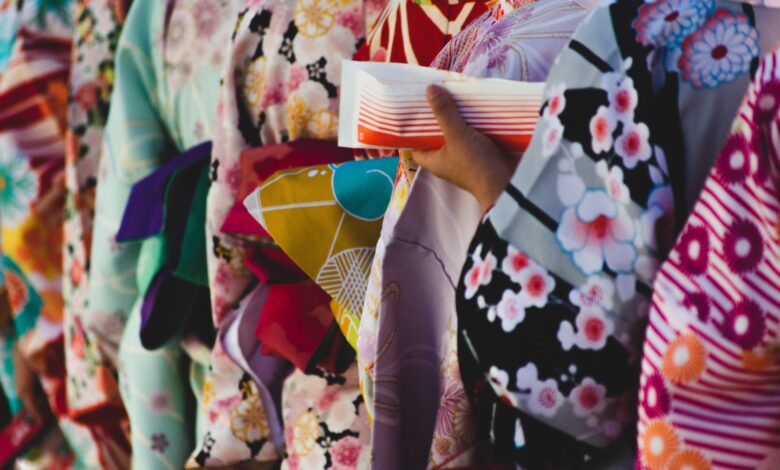The beauty of adornment for a kimono nyt explores its rich tradition

Adornment for a kimono nyt highlights the beauty and cultural significance of the decorative elements that complete this traditional Japanese attire. The kimono, with its flowing design and elegant patterns, is not just a piece of clothing—it’s a work of art. From colorful obis (belts) to delicate accessories, every detail plays a role in making the kimono a unique expression of style and tradition.
In the pages of NYT, we can discover how adornment for a kimono adds to its timeless appeal. These adornments are more than just decoration; they tell stories of history, craftsmanship, and cultural pride. Whether it’s a brooch, a decorative pin, or an intricately designed obi, each piece brings life to the kimono in its own way.
What Is Adornment for a Kimono? Understanding Its Tradition
Adornment for a kimono is the beautiful decorations that are added to complete the outfit. In Japan, the kimono is a special type of traditional clothing worn during important events. The adornments are carefully chosen and play an important role in how the kimono looks. They are more than just pretty details; they have meaning and show respect for the culture.
These decorations can include things like ribbons, pins, and small accessories that go with the kimono. The most common adornments are the obis, which are belts that wrap around the waist. These accessories are often colorful and designed with flowers, animals, or other symbols. They help to make each kimono unique.
The beauty of the adornment for a kimono comes from the thought and care that goes into choosing them. Every piece is selected with meaning and purpose. When looking at the history of kimonos, you will see that the adornments have changed over time, but their importance remains the same.

How Adornment for a Kimono NYT Reveals the Art of Dressing
In the NYT, the article on adornment for a kimono explores how dressing in this traditional way is more than just putting on clothes. It’s about expressing art and culture. The way each accessory is added shows the wearer’s attention to detail. This tradition has been passed down for generations and still holds a lot of value today.
Each kimono has its own special adornment, depending on the occasion. For example, a wedding kimono might have more detailed decorations, while a kimono worn during a casual gathering might be simpler. The key is the balance between the kimono’s design and the adornments. The NYT article points out that this balance creates a sense of beauty that is both simple and elegant.
In addition to looking beautiful, adornment for a kimono also reflects the time and place in which it’s worn. Different seasons and events influence what accessories are chosen. The NYT shows how the art of wearing a kimono is a way to tell a story with clothes.
The Role of Accessories in Adornment for a Kimono NYT
The NYT explains that accessories play a big role in adorning a kimono. These little additions, like hairpins, fans, or obi cords, give life to the outfit. Without these accessories, a kimono would feel incomplete. The right accessory can bring out the beauty of the fabric and make the entire outfit look more polished.
For example, in the NYT article, it talks about how a brightly colored fan can make a simple kimono look much more striking. The fan becomes a key part of the outfit, highlighting the wearer’s personality. Accessories can also have symbolic meanings. For example, certain colors or patterns on a kimono can represent luck, happiness, or love.
Choosing the right accessories is an art. In Japan, many people spend a lot of time thinking about what accessories to wear with their kimono. The NYT shares how this careful choice of adornment is what makes wearing a kimono such an elegant and thoughtful practice.
Choosing the Right Adornment for a Kimono: A Beginner’s Guide
If you’re new to wearing a kimono, choosing the right adornment might seem tricky. The key is to understand the occasion and the type of kimono you are wearing. A more formal kimono might need a heavier, more detailed adornment, while a casual one could look better with a simpler accessory. The NYT offers some great tips for beginners on how to make these decisions.
One important piece to think about is the obi. This belt, often decorated with flowers or patterns, is one of the most important parts of the kimono. In the NYT guide, it is suggested that beginners focus on finding an obi that matches the color and style of their kimono. Once you have the right obi, you can add other smaller accessories like hairpins or brooches.
It’s also important to remember that adornment for a kimono isn’t just about decoration; it’s about showing respect for the tradition. Beginners can start by learning the basic rules of kimono fashion and slowly experiment with different accessories to find what suits them best.

Why Adornment for a Kimono Is a Symbol of Japanese Culture
In Japan, kimono adornment is much more than just decoration. It represents the culture’s deep respect for history and tradition. Each accessory has meaning and is chosen based on the event or season. The NYT highlights how this tradition connects people to their heritage.
The use of adornment for a kimono has been around for centuries. In the past, only the richest people could afford to wear kimonos with elaborate adornments. Today, people of all backgrounds continue to wear these traditional garments, keeping the cultural significance alive. The NYT points out that the way a kimono is adorned can tell you a lot about the wearer’s family, status, and personal style.
By wearing a kimono and choosing its adornments carefully, people show their pride in Japanese culture. It’s a beautiful way to honor traditions while also celebrating personal creativity.
Adornment for a Kimono NYT: The Best Pieces to Complete Your Look
The NYT article on adornment for a kimono explores the best pieces to complete your look. When wearing a kimono, the right accessories can make all the difference. From the obi to the small details like hairpins, each piece adds a unique touch. These accessories aren’t just for decoration; they help bring the kimono to life.
One of the key pieces highlighted in the NYT article is the obi. The design and fabric of the obi are often what draw people’s attention first. It’s the centerpiece of the kimono, and when paired with the right accessories, it can really stand out. The NYT suggests pairing the obi with a fan or decorative hairpin for an added touch of elegance.
Other popular adornments include brooches and decorative knots. These accessories can make a kimono look even more sophisticated and stylish. The key is to find pieces that complement each other, so everything works together perfectly.
Conclusion
Adornment for a kimono is more than just adding pretty decorations. It’s about celebrating the beauty of Japanese tradition and culture. Every accessory has a purpose and helps tell a story. Whether it’s a colorful obi or a delicate hairpin, each piece is carefully chosen to match the kimono and the occasion.
When you wear a kimono with the right adornments, it becomes a beautiful expression of style and respect for the tradition. The NYT shows us that the art of adorning a kimono is something that has been passed down for generations. With these tips, anyone can learn to style a kimono and appreciate the history behind its beautiful adornments.




